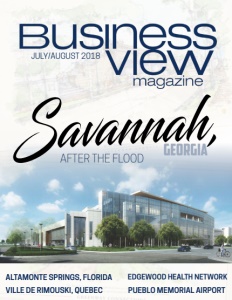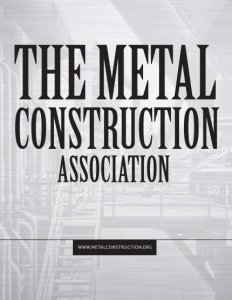The Metal Construction Association
Its use is growing
The Metal Construction Association (MCA) is a Chicago-based trade association, created to promote the use of metal in construction.
The Metal Construction Association (MCA) is a Chicago-based trade association, created to promote the use of metal in construction through the use of marketing, education, and selective action on public policies that affect metal’s use in building projects.
Recently, Business View Magazine spoke with MCA’s Executive Director, Karl Hielscher, to find out more about the Association’s mandate, vision, and programs. The following is an edited transcript of that conversation.
BVM: Karl, can you talk about the MCA’s founding?
Hielscher: “The Metal Construction Association began in the early 1980s when a number of manufacturers of metal cladding for buildings – residential and non-residential – recognized that in order to expand the use of metal in construction, in general, and cladding, in particular, they needed to market it as an industry a lot better than it had been, before.
(Cladding – the application of one material over another to provide a skin or layer. In construction, cladding is used to provide a degree of thermal insulation and weather resistance, and to improve the appearance of buildings.)
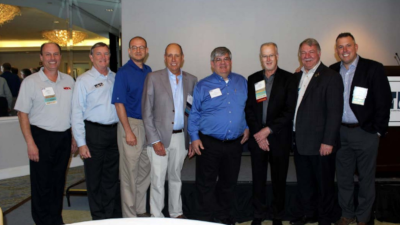
“That was the initial focus of the Metal Construction Association, and it continues to this day. The path has become more complex and expanded, and we recognize that one of the greatest points for us to emphasize is how to use metal in construction for cladding in roofs and walls most effectively – that’s cost-effectively and aesthetically – and how to install it properly. So, we spend a lot our effort in educating people on the right way to design, specify, install, and maintain metal roofs and walls on residential and non-residential buildings.”
BVM: Who are these people you’re educating?
Hielscher: “We start with the design architects and specifiers and also contractors so that they learn best practices. We help, not only when, but when not to order it, and how to utilize it in conjunction with other building materials. You’re seeing an awful lot more complementary design – utilizing metal with brick and stone and glass and wood in the design of buildings in the last decade or so. And we’re fully supportive of that. But, there’s a way to build those type structures properly, utilizing dissimilar materials.”
BVM: Do you also educate your own membership?
Hielscher: “Absolutely. The Metal Construction Association represents a number of different industry niches within metal in construction on the cladding side – we’re non-structural; we’re the walls and roofs. We have metal composite materials, we have single-skin, insulated metal panels, natural metals, and they all have their place and they all have their own unique attributes and challenges for installation and specification. And that is a major focus of ours – to make sure that we educate all the interested or involved parties on how to properly specify, design, and build with these materials.”
BVM: You mentioned education as a major function of the Association. Is advocacy also a focus?
Hielscher: “Absolutely, it is. If you go on our website to our technical bulletins and white papers – those are fully-vetted, both professionally and legally, for them to be accurate, and we try our best to stay away from marketing in those papers.”
BVM: Do you advocate in front of legislative or government bodies?
Hielscher: “We advocate more within the code and technical side more than political lobbying. We’re technical advocates as opposed to political advocates.
BVM: Can you talk a bit about your membership?
Hielscher: “We are a manufacturer, distributor, and contractor-based association. We have a little over a hundred members and they cover all of the various niches that I described, including supporting materials – fasteners, sealants, steel suppliers, paint suppliers, as well as the actual fabricators and manufacturers – and even equipment manufacturers that are involved in forming metals for roof and wall cladding. We have multiple tiers, and the pricing is commensurate to the size of the businesses, generally.”
BVM: How do you explain the benefits of joining the association to a prospective member?
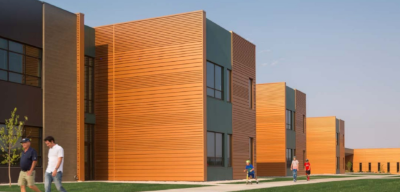 Hielscher: “The major benefit of joining the Metal Construction Association is that your business will be represented along with other business that want to advance the use of metal in construction, both in the residential and non-residential worlds. And you’ll be able to participate in the active, positive representation of our industries to those people and those entities that choose building materials to design and create their buildings with.”
Hielscher: “The major benefit of joining the Metal Construction Association is that your business will be represented along with other business that want to advance the use of metal in construction, both in the residential and non-residential worlds. And you’ll be able to participate in the active, positive representation of our industries to those people and those entities that choose building materials to design and create their buildings with.”
BVM: How do you communicate with your active members?
Hielscher: “We have two major meetings and a trade show in October-November. It’s the signature trade show for metal cladding in North America. It’s called METALCON and it’s over 28 years old. This year, it will be in Charlotte, North Carolina. So, there are our two major meeting events, along with multiple, interim council and committee activities, and task groups to advance our causes. We’re actively involved with other trade associations, as well, when it’s appropriate for us to collaborate to advance advocacy of certain technical aspects of the marketplace.”
BVM: What is the size of the MCA staff and what are their main priorities?
Hielscher: “We have paid staff that is provided by the Association Management Center (a management consultancy firm), and then we have three people, like myself, who are contracted professionals to advance the technical and specific causes. Administratively, the AMC staff from Chicago handles that portion. We have an active website, email, and public relations activity, which we contract for, separately. So, we are focusing our outreach and education to expanding the understanding of the cost-effectiveness and the environmentally sustainable attributes of metal in all of its aspects – purchasing, installing, and its ability to be almost fully recycled for re-use.”
BVM: What does the landscape look like for the industry as a whole over the next several years, and how with the MCA continue to be a viable voice for your members?
Hielscher: “We see it as a very positive environment for metal, as people continue to recognize its durability, its cost-effectiveness, and its structural integrity. The storms that we had in the southeast – there’s a lot of evidence that metal roofing is superior to the alternatives. And its age and sustainability are second to none – well slate probably lasts forever, but metal is much more cost-effective and lasts much longer than most conventional roofing systems that require a lot of maintenance and upkeep over their life – and are not recyclable.”
BVM: Hasn’t metal always been used in construction? For example, steel has always been used to strengthen concrete, hasn’t it?
Hielscher: “Metal has its places where it is much more conventionally used. Metal cladding, though, in exterior walls and roofs, is still a less than a major share, but it’s growing. We’re increasing our market share, sustainably, and that’s what we’re really after. Because, nothing is right for every application, but we’re more right for a lot more applications than we’re currently being used for.
“One of the interesting things I’ve observed, being in the business for 25 years, and now, doing this for several years: if the entity owns the building and intends to own and operate the building, they’re more inclined to use a metal roof than something else, because they understand it’s going to last longer, and they’re going to be there longer.
“Metal is not the least expensive way to install a building at the outset. However, its durability and its need for regular maintenance is significantly less, and its life cycle extends well beyond other, more conventional materials.
“We have continually improved the product offerings both in shape, and in coating quality, to where the materials are very aesthetically and performance-wise pleasing to an owner. Think about convention centers, major hotels, major venues – they’re almost all metal, these days. The major NFL properties, the Major League Baseball properties use a tremendous amount of visible metal – not just structural, but visible metal. Health institutions, hospitals – there’s a lot of multi-story, metal cladding. We’ve learned how to make materials that are very architecturally pleasing and perform for a long, long time.
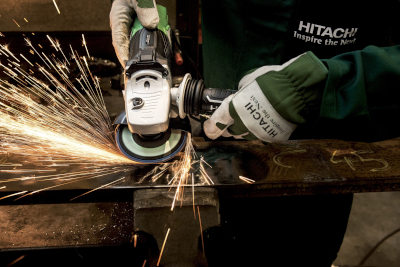 “Now, if you’re a young or middle-aged person with a house, and you don’t plan on moving in 4.7 years, which is the average, but you plan on living there a long time, rather than replacing two or three roofs, buy one roof that cost you 30 or 40 percent more than the first roof.
“Now, if you’re a young or middle-aged person with a house, and you don’t plan on moving in 4.7 years, which is the average, but you plan on living there a long time, rather than replacing two or three roofs, buy one roof that cost you 30 or 40 percent more than the first roof.
“A couple of years ago, we did a three-year study performed by an independent ISO-approved testing company that inspected and validated metal roof systems all over the country that we were able to identify, that were 30 to 40 years old. And they provided us with certified documentation that says metal roofs can last up to 60 years.
“If you go to rural Florida, rural Texas, rural anywhere, and you find somebody that has a property with a fairly nice home, odds are, it’s a metal roof. They own the property; they don’t plan on leaving; and they were able to afford to put a little more expensive roof on their place, and know that they don’t have to mess with it in five, ten, fifteen years. And that’s who we’re selling to on the residential side. And all governments are great fans of metal roofing systems – because they own the buildings.”
BVM: In closing, are there any other points that you want our readers to know about the MCA?
Hielscher: “The Association is a very member-active organization; the members are involved in the creation, development, distribution, and promotion of our work product and the initiatives that we undertake are directly provided by our membership. These are manufacturers and distributors who roll up their sleeves and get involved.”
Check out this handpicked feature on Kenwood Painted Metals: Pre-Painted Metal Specialists.
AT A GLANCE
WHO: The Metal Construction Association
WHAT: A trade association created to promote the use of metal in construction
WHERE: Chicago, Illinois
WEBSITE: www.metalconstruction.org

